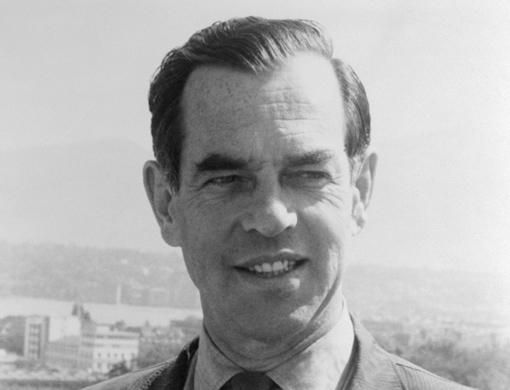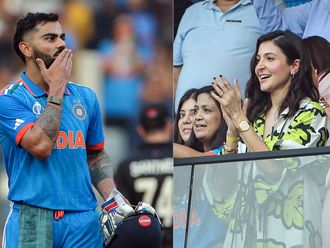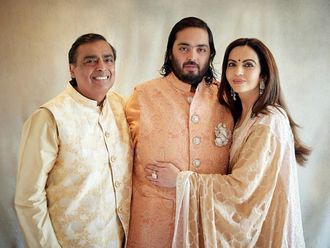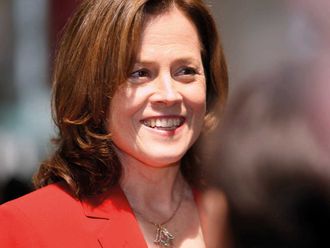From good ideas can sometimes be born stories that change history. Star Wars is no exception. The fantasy that came out of George Lucas's cinematic dream changed the way films are made worldwide, but also it changed the lives of millions of people.
Star Wars gave life to a fan following that isn't found with any other film. The fantasy Lucas created has grown so expansive that it could not be contained in films, entering the realms of literature, merchandising and video games.
That slightly-Ewok-looking guy is the real cause for celebration this year. Of course, we are referring to George Lucas and the celebration is for the 30th anniversary of Star Wars: A New Hope, the first of six films that complete the Star Wars saga.
But who is George Lucas and how did his dream become such a commercial and artistic success? Well, he is the man behind the Star Wars saga. In spite of having directed only the Episodes I and IV, Lucas was involved, in one way or another, in the scripts of the films, and he was the executive producer of every Star Wars film.
Lucas wasn't alone in his dream. He was accompanied by some of the greatest talents from the cinema industry, especially in the area of special effects, design and sound. Without the cream of the movie world, it would not have been possible to characters such as Yoda, Jabba The Hutt, Chewbacca and the droids to life, or to fully develop the design of galactic vehicles as the X-Wings, Starcruisers and the AT-ATs, among others.
The origin of Lucas's idea is quite unusual. According to George Lucas, his first intention was to make a film about Flash Gordon, in tribute to the old science fiction comics, but Italian film producer Dino De Laurentiis had already acquired the rights to the material. So Lucas had to create his own story with its own characters. He started the writing process of the script after being inspired, notably, by filmmakers Akira Kurosawa and Francis Ford Coppola and by mythology professor Joseph Campbell. Despite all these influences, Lucas still had to differentiate between the similar details of his story and that of Flash Gordon (which tells the tale of a blond space hero who, along with some rebels, fights against a superior military force, the product of an evil Empire).
With this idea the first film was released in May of 1977, called A New Hope. In the order of events, it is Episode IV of the saga.
Why did Lucas decide to start with this film rather than from the beginning? He chose A New Hope because it was the cheapest episode to make. The film cost only $13 million (Dh47.7 million), but even then very few in the movie industry believed in the project. It was a very dangerous bet and at the time Lucas's name didn't carry much weight in Hollywood.
In spite of the problems that Lucas had to finance the film (he barely hoped to recover his investment), the film was a tremendous success, especially on merchandise sales. A New Hope grossed $1.17 billion (Dh4.2 billion), becoming the second-highest-grossing film of all time (just behind 1939's Gone With the Wind). This success raised the expectations for the next two movies.
Motivated by the experience of the first film and working with an increased budget, Lucas released The Empire Strikes Back three years later and, three years after that, the third part, The Return of the Jedi. At that point George Lucas believed it would be the last film in the saga.
The movie was subject to several problems; such actor Mark Hamill (who played Luke Skywalker) being involved in a car crash just before shooting The Empire Strikes Back began. Viewers watching the film later thought that Luke Skywalker's scars from being attacked by the wampa were fake, but they were in fact scars caused by the accident.
In 1997, George Lucas re-edited the three films, improving the visual and sound quality, recovering some deleted scenes and replacing many of the original special effects with computer-generated effects. It was part of a long-term project to create three new films, prequels to the first trilogy.
In 1999 George Lucas directed the first of these prequels, The Phantom Menace, or Episode I. Later, with intervals of three years, Episode II (The Attack of the Clones) and Episode III, (The Revenge of the Sith) were made. Since then, George Lucas has said several times that he won't make any more Star Wars films because they have taken up such a big part of his life.
Lucas made sure that from the beginning that there were comic strips, novels and articles related to Star Wars. Initially the idea was to compensate for the possible financial failure of the first film, but soon these made the saga very profitable and satisfied the insatiable demand for information from fans. His companies still produce many kinds of merchandise, called The Expanded Universe.
Lucas's inspiration
It's no a secret that Lucas wanted to make a mythical yet modern example of a heroic epic tale. He did it by taking advantage of some archetypes that can be found in many cultures around the world. In Star Wars you can find the story of a child born without a father; a hero who surpasses everyone and later becomes a master of new generations; and you can even find another hero, one who fails and becomes a tyrant.
Much of the inspiration for George Lucas was born from creations of other filmmakers or writers before him.
The book The Hero with A Thousand Phases by Joseph Campbell was a great influence on Star Wars. Campbell was known for his work in the areas of comparative mythology and comparative religion, studies that explained how myths and religions evolved through history.
Akira Kurosawa, film director and creator of movies such as The Hidden Fortress, was one of the major influence on Lucas. While Kurosawa used his film to show the viewpoint of someone rising to power, Lucas decided to present a story in which we can understand the point of view of the ones in charge of the battle. In fact, Lucas has accepted that the character of Darth Vader was inspired by Kurosawa's Seven Samurai in which the villain wore a Kabuto, a traditional Japanese helmet.
Finally, another influence on George Lucas was director Francis Ford Coppola, who produced Lucas's first movie, THX 1138. Coppola added something of his own style. In fact, Lucas adapted the personage of Han Solo from classic American western films made by Coppola.
Lucas's companies
Lucasfilm
This is the company that started it all. Lucasfilm Limited is an American production company best known for producing the Star Wars films. George Lucas founded it in 1971, based in Marin County, California. The company has also produced other box office hits, including the Indiana Jones franchise and American Graffiti.
Lucas Arts
Formerly known as Lucasfilm Games, this is a video game company that became famous for its graphics. It began in 1982 and creates games for platforms such as PC, Playstation, Nintendo Game Cube or X-Box.
Industrial Light and Magic
Industrial Light and Magic is the company responsible for most of the visual effects in the Star Wars films. George Lucas founded it in 1975, as part of Lucasfilm Limited. This company has made SFX on over 200 other films, including Jurassic Park, Back to the Future, and the Harry Potter and Indiana Jones films, among others.
Lucas Licensing
When movie phenomenon like Star Wars shakes the planet, it's expected that the merchandise machine will start up to support the films. Meanwhile, a movie fan base with the thirst for collecting also exists. That's why Lucas Licensing exists. This wholly owned subsidiary of Lucasfilm is responsible for licensing and merchandising activities related to Star Wars, Indiana Jones, and other Lucasfilm properties.
LucasBooks
LucasBooks is a small department within Lucas Licensing which serves as the publishing imprint of Lucasfilm. It targets readers of all ages with books, comics, and magazines based on perennials such as Star Wars and Indiana Jones as well as newly developed fiction and non-fiction material.
Trilogy trivia
Episode I
While shooting the first film in the second trilogy (The phantom menace), a rumour ran that Natalie Portman had sprained her ankle while filming a scene. It wasn't until the release of the DVD that the rumour was confirmed on the audio commentary. In fact, Natalie's limp was corrected digitally in post-production.
The character of Jar Jar Binks divided many fans of the saga. The Gungan's detractors believed he existed purely to create a market for merchandise to children. Jar Jar was also heavily criticised by members of the Afro-Caribbean community for portraying island culture as a caricature of incompetence and clumsiness.
Episode II
Many Star Wars fans think that the romantic scenes between Anakin and Padmé in Episode II meant a lot of was lost, a reason why in the end the film lost many followers. This is the only Star Wars film that was not the highest grossing film for the year in which it was originally released. It was out-grossed by Spider-Man and Lord of the Rings: The Two Towers.
Attack of the Clones was the last Star Wars feature to be widely released in VHS format, the final film in the series, Revenge of the Sith, being a DVD-only release. The exception was in the UK and Australia, where Episode III was also released on VHS.
Episode III
This is the only film in the saga that was classified as PG-13 by American censors. When the other films were classified this classification did not exist, but after being reedited maintained their classification. George Lucas agreed with the decision of the censors, saying that the film has dark and emotional content.
George Lucas: Writer, Editor-producer, Director
1970: THX 1138
Transformed an award-winning student film into his first feature
1973: American Graffiti
Won a Golden Globe award
1977: Star Wars
Became an international phenomenon, broke all box office records and set new standards in film visuals and sound. Won eight Academy Awards
1980: The Empire Strikes Back
1981: Created Indiana Jones
Co-writer and executive-producer Raiders of the Lost Ark (1981), Indiana Jones and the Temple of Doom (1984) and Indiana Jones and the Last Crusade (1989), a trilogy that won eight Academy Awards
1983: Return of the Jedi
1988: Willow
Executive-producer. Adventure-fantasy based on Lucas's original story. Three Academy Award nominations
1988: The Man And His Dream
Received three Academy Award nominations.
1994: Radioland Murders
1999: The Phantom Menace
Top box office hit of 1999
2002: Attack of the Clones
First major live-action movie to be shot entirely digitally
2005: Revenge of the Sith
$1.17 billion
According to Forbes.com, Episode IV: A New Hope grossed $1.17 billion (Dh4.2 billion) at the box office, becoming the second-highest-grossing film of all. The film, made thirty years ago, cost $13 million (Dh47 million) to make.
$22 billion
The Star Wars franchise has earned more than $22 billion (Dh80 billion). This empire has grown thanks to six blockbuster films and an industry of DVDs, toys, videogames and books.







_resources1_16a30b3d57a_small.jpg)






